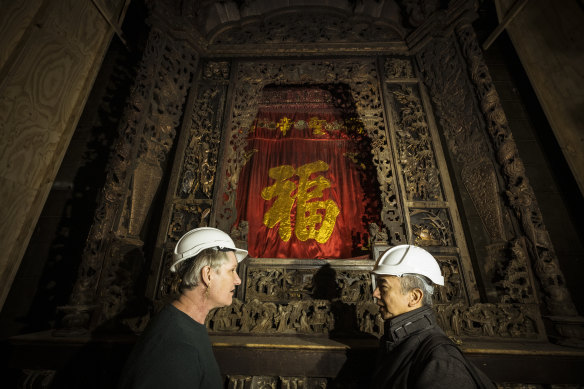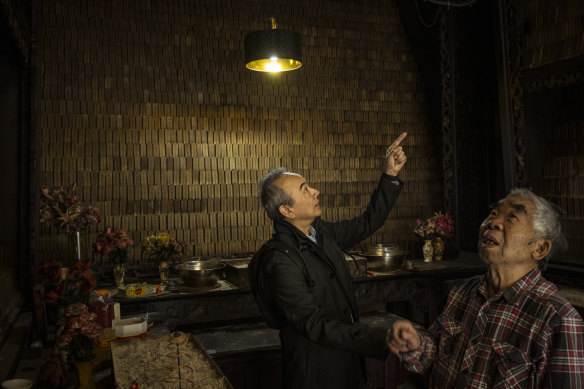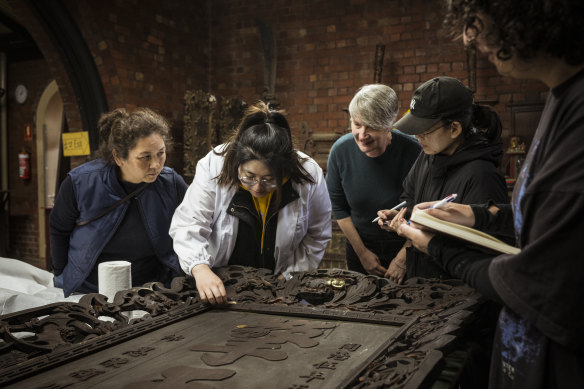In a quiet patch of South Melbourne, passers-by have been leaving flowers, handwritten notes and bottles of water by the red and black gates for months.
The site, in Raglan Street, is home to Australia’s oldest continuously operating Chinese temple. But the offerings are not for the deities or thousands of ancestral tablets that line the temple’s walls.

Dr Sophie Couchman and Michael Lam inspect the panelling at the See Yup Temple’s Guan Di altar. Credit: Chris Hopkins
Instead, the small acts of kindness are for volunteers who have been securing and maintaining the site since February, when an electrical fire ripped through the central building during Chinese New Year celebrations for the Year of the Dragon.
The current iteration of the See Yup Temple, built in 1866 with a blend of Chinese and early-Australian architecture, was underinsured. But thanks to an injection of state funds, its volunteers can now afford to appoint a project manager and expert consultants.
See Yup Society president Michael Lam said the $60,000 grant was the second miracle to occur at the site in seven months.
The first was that, when the electrical fire took hold, the flames launched upwards instead of outwards.

Michael Lam (left) and temple custodian Hua Yan Chen inspect the ancestral hall. Credit: Chris Hopkins
“None of the gods or deities was touched by the fire,” Lam said. “I don’t know if you’re superstitious, but after seeing it, it was amazing.”
Despite the stroke of luck, historic panelling near the deities was badly damaged. The central skylight was also destroyed, and there are lingering questions about toxicity, given the kind of paint used in the 1800s.
The temple, which can have up to 20,000 visitors pass through its doors during culturally significant events, also contains about 13,000 ancestral plaques. Each plaque represents a person. Many of them date back to the Gold Rush era.
The site even houses Melbourne’s first festive dragon, which dates back to Federation.

Material conservation students are guided by Associate Professor Nicole Tse and historian Dr Sophie Couchman to conserve fire-damaged items. Credit: Chris Hopkins
Historian Dr Sophie Couchman, who has been researching Chinese-Australian history for about 30 years, said the temple was considered unique.
“There have been members of the Chinese community worshipping here continuously from 1856 to now,” Couchman said. “The trustees purchased the land bit by bit. Money was raised across Victoria at that time. It was an extraordinary effort.”
Lam and Couchman hope the temple can be returned to its pre-fire glory by 2026. While that means people won’t be able to pay homage to their ancestors for the coming Chinese New Year, in January 2025, the See Yup Society plans to set up a marquee on the temple grounds.
Premier Jacinta Allan said her government was proud to contribute to the temple’s rebuild.
“This is about more than just repairing a building. It’s about preserving a living piece of our multicultural history.”
Start the day with a summary of the day’s most important and interesting stories, analysis and insights. Sign up for our Morning Edition newsletter.
clarification
An earlier version of this story stated that the temple was uninsured. It was, in fact, underinsured.